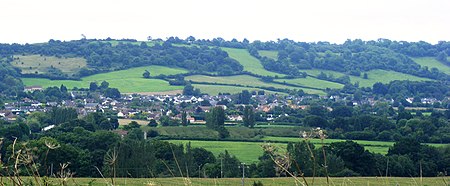Burledge Hill
Bath and North East SomersetEngvarB from September 2013Environment of SomersetHill forts in SomersetHills of Somerset ... and 8 more
History of SomersetIron Age sites in SomersetMeadows in SomersetMendip HillsNeutral grassland Sites of Special Scientific InterestScheduled monuments in Bath and North East SomersetSites of Special Scientific Interest in AvonSites of Special Scientific Interest notified in 2005

Burledge Hill (grid reference ST588587) is on the southern edge of the village of Bishop Sutton, Somerset, England. It is the site of a Site of Special Scientific Interest and an univallate Iron Age hillfort.
Excerpt from the Wikipedia article Burledge Hill (License: CC BY-SA 3.0, Authors, Images).Burledge Hill
Sutton Hill Road,
Geographical coordinates (GPS) Address Nearby Places Show on map
Geographical coordinates (GPS)
| Latitude | Longitude |
|---|---|
| N 51.3259 ° | E -2.59267 ° |
Address
Sutton Hill Road
Sutton Hill Road
BS39 5UN , Stowey-Sutton
England, United Kingdom
Open on Google Maps









